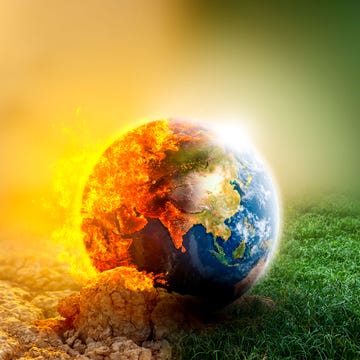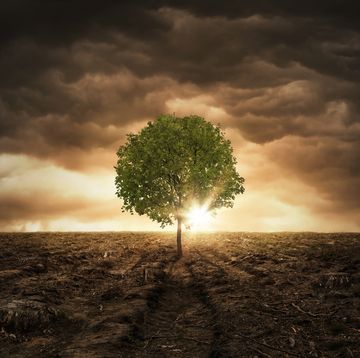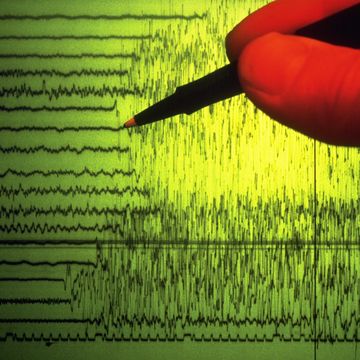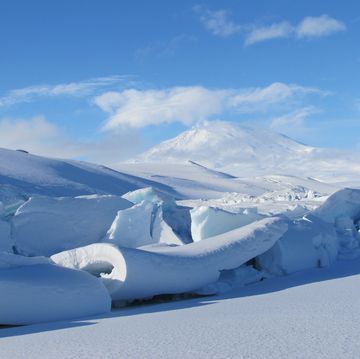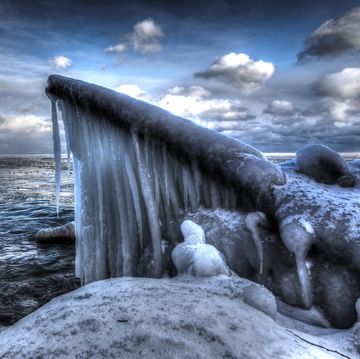For decades, meteorologists have known that warmer average ocean temperatures cause more powerful hurricanes and cyclones. And warmer seas lie in our future: The Earth's oceans, like a giant heat-sink, soak up 90 percent of the extra heat caused by global warming. But exactly how much more dangerous we should expect these natural disasters to become in the coming decades has been largely a guessing game, says Wei Mei, a cyclone researcher at the University of California, San Diego.
"All of the scientific projections for cyclone intensity have been based on theory [or rough models], not actual statistics, and have had a huge range of results. . . from estimating around a 2 percent decrease in intensity up to a 17 percent increase."
But Mei, along with his team of ocean scientists, has just completed the world's first statistics-backed computer model of how climate change will cause more violent cyclones. For their study that appears today in Science Advances, they crunched the numbers on every single cyclone that's struck the northwest Pacific Ocean since the 1950.
Even with a conservative projection of global warming, the average cyclone's strength will jump an entire category level—from category three to four—by 2100. That amounts to about a 14 percent increase in intensity. For hurricanes, like those in the North Atlantic, Mei believes we could expect a similar result. According to Mei, this increase means that decades from now, "cyclones like Typhoon Haiyan which killed over 6,300 people," and destroyed an estimated $14.5 billion worth of property could no longer be considered rare and exceptional natural disasters.
Why does a hotter ocean make storms more deadly? Mei explains that the root of a cyclone's intensity lies in its ability to transfer heat from the surface of the ocean into the atmosphere. The hotter the ocean's surface, the more energy is available for the storm. But there's another factor this equation, one that's crossed up many theory-based estimates. As a hurricane or cyclone moves along it path, the storm also churns up the ocean, mixing together the warm surface water and the cold deeper sea. That infusion of cold water tends to temper the force of the storm. But global warming is heating that deeper water, and in the process, wearing away the Earth's natural handbrake for ocean storms.




